13 Rare U.S. Currency Notes Worth More Than You Think
U.S. currency holds more than just financial value in some cases. Rare notes can be found in old collections, tucked away in drawers, or even in your wallet. What sets them apart might be a printing error, a special serial number, or a design that is no longer used. These small differences can turn an ordinary bill into something worth collecting. Keeping an eye out can lead to a surprising find.
This post may contain affiliate links, which helps keep this content free. Please read our disclosure for more info.
1899 $2 Large Size Silver Certificate
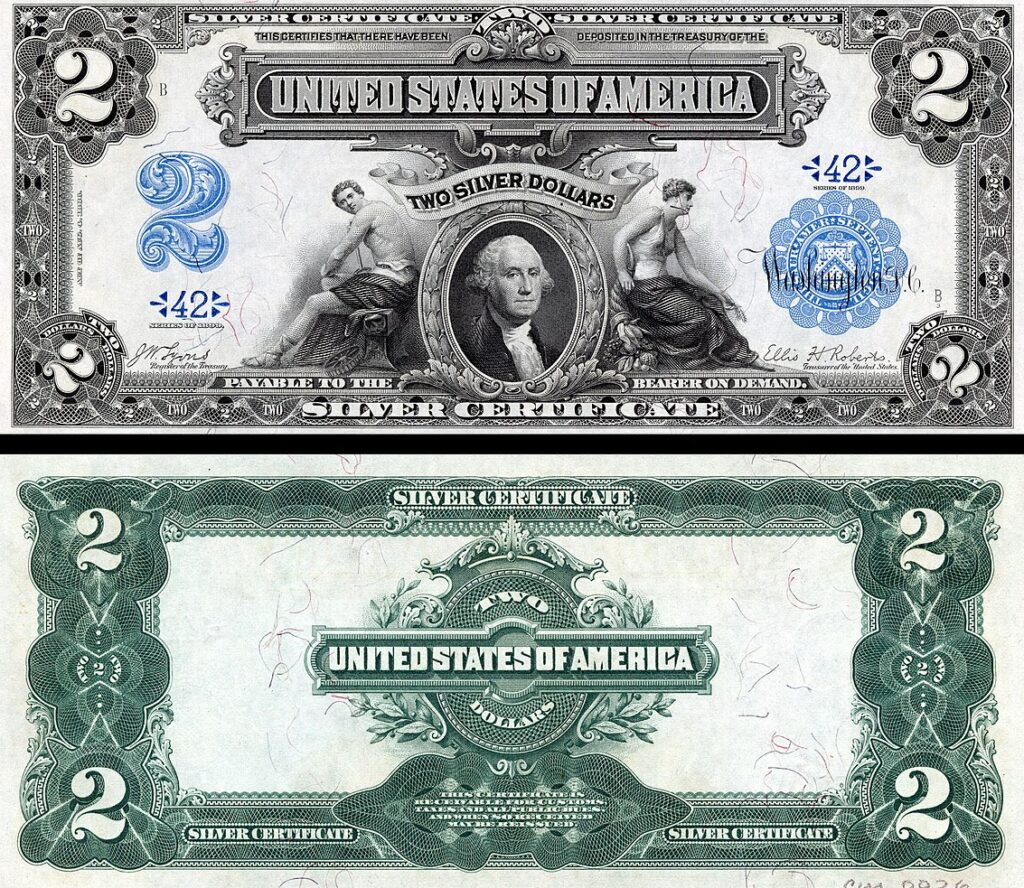
This note is easy to spot with its blue seal and large size, measuring over 7 inches long. It features George Washington between two allegorical figures representing mechanics and agriculture. These were widely circulated and often show signs of wear, which affects value. A circulated example might sell for around $100, while uncirculated notes can reach $1,000 or more.
Collectors like this note for its artistic design and historical feel. It was part of everyday money at the time, so finding one in excellent condition is not easy. The blue seal and detailed imagery help make this a standout item. It remains a favorite among silver certificate collectors.
1899 $5 Indian Chief Large Silver Certificate
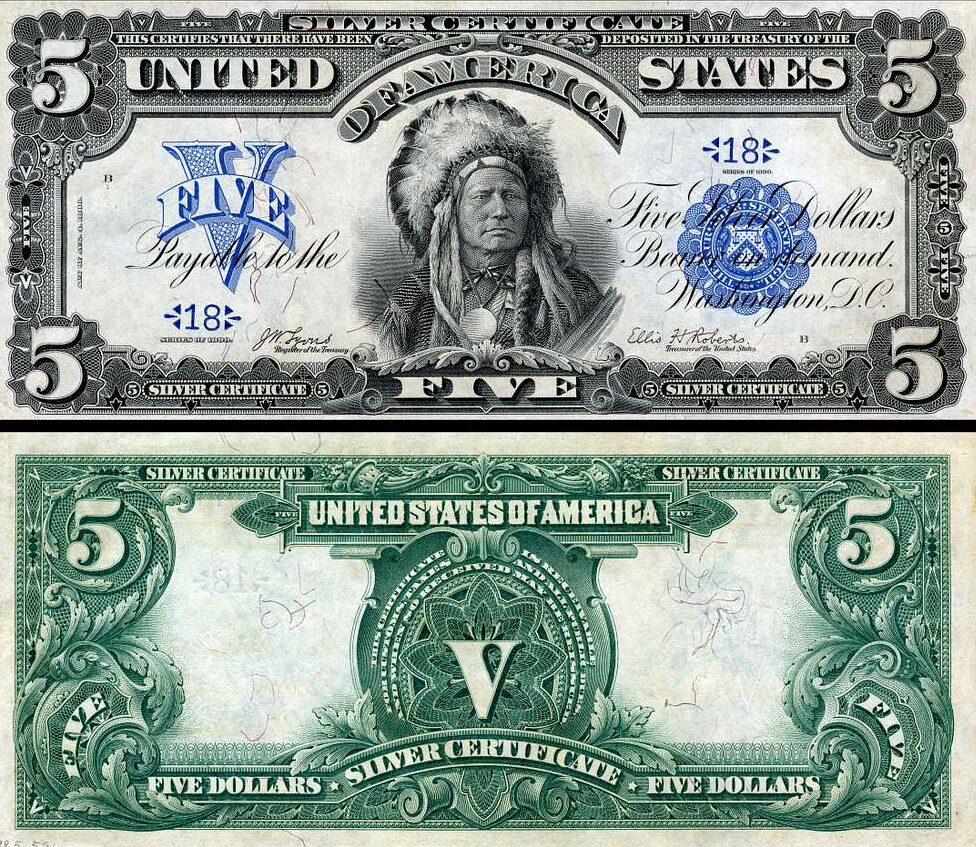
This note stands out with a bold portrait of Chief Running Antelope, the only Native American featured on U.S. paper currency. It was used in circulation and often shows heavy wear, making high-grade examples hard to find. Most circulated versions sell for $300 to $800, while pristine ones can reach several thousand dollars. Its design and cultural significance add to its appeal.
Collectors admire the rich engraving work and historical value of this piece. It reflects an important part of U.S. currency history and has grown in popularity over time. Many people search for strong ink detail and solid paper condition. The note remains one of the most recognizable silver certificates.
1899 Large Size Silver Certificate
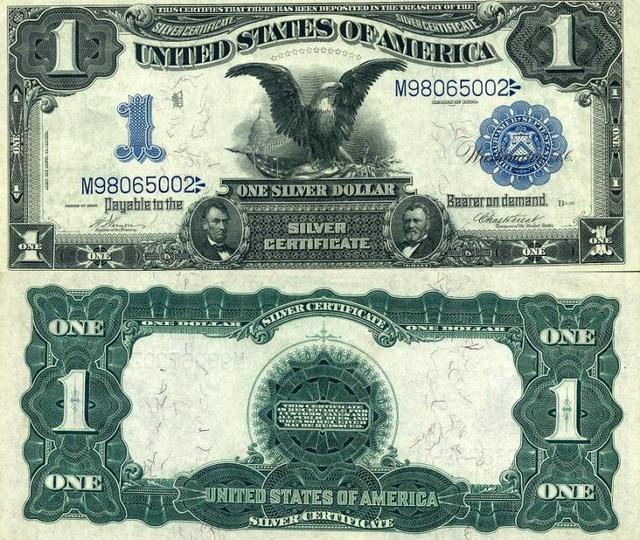
This refers to various denominations printed that year in a larger format, all featuring blue seals and detailed engravings. These notes were used widely in trade and general circulation, so many surviving examples are worn. Depending on the denomination and condition, values range from $100 to over $3,000. Some notes feature unique vignettes or portraits that add collector interest.
The size and bold designs make these stand out from modern bills. People enjoy collecting them due to their old-world appearance and feel. Some are rarer than others, especially those with low print runs or limited circulation. These notes show how money looked during a very different time.
1922 $10 Gold Certificate Large Size Note
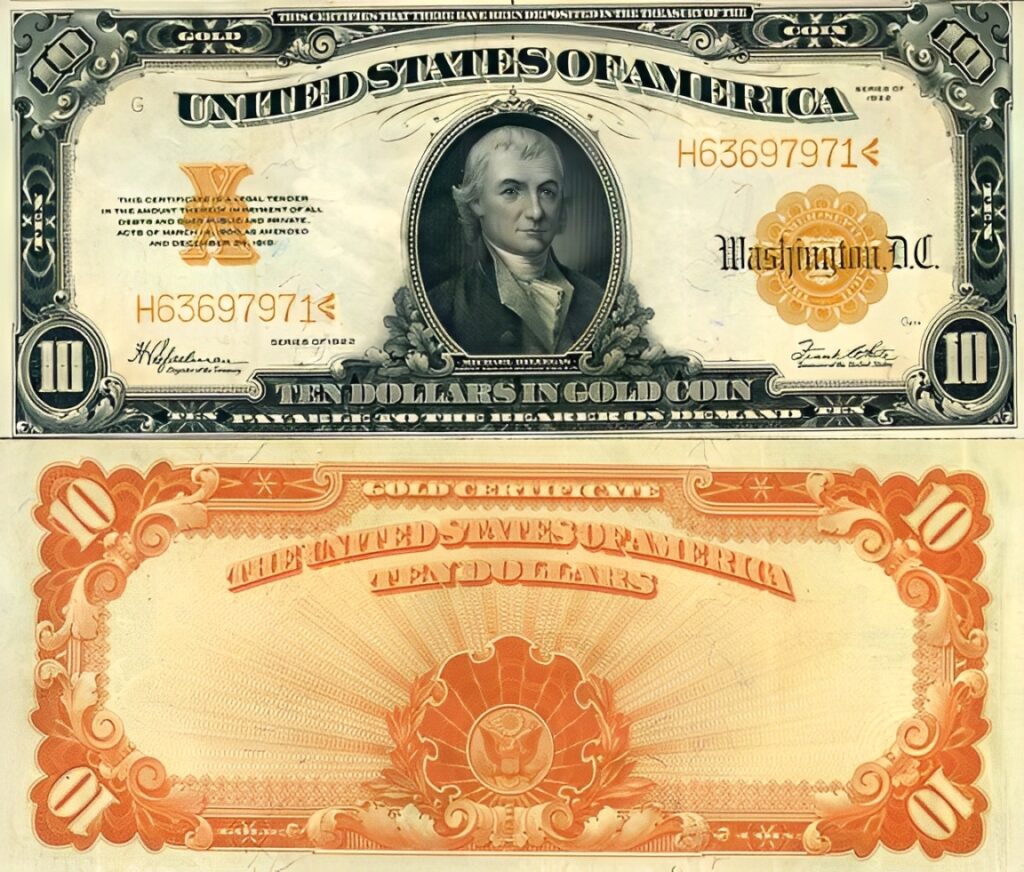
This gold certificate features a portrait of Michael Hillegas, the first Treasurer of the United States. The note was backed by gold deposits and used in regular trade, though it is no longer redeemable for gold. Circulated notes sell for $150 to $500, while better-preserved ones can sell for over $1,200. Its orange-gold seal is one of its most striking features.
Collectors appreciate the bold look and financial history it represents. Although it was once common, fewer high-grade examples remain today. This note was part of a system that helped stabilize the economy during uncertain times. The large format and distinct color set it apart from other bills of the period.
1928 $20 Gold Certificate
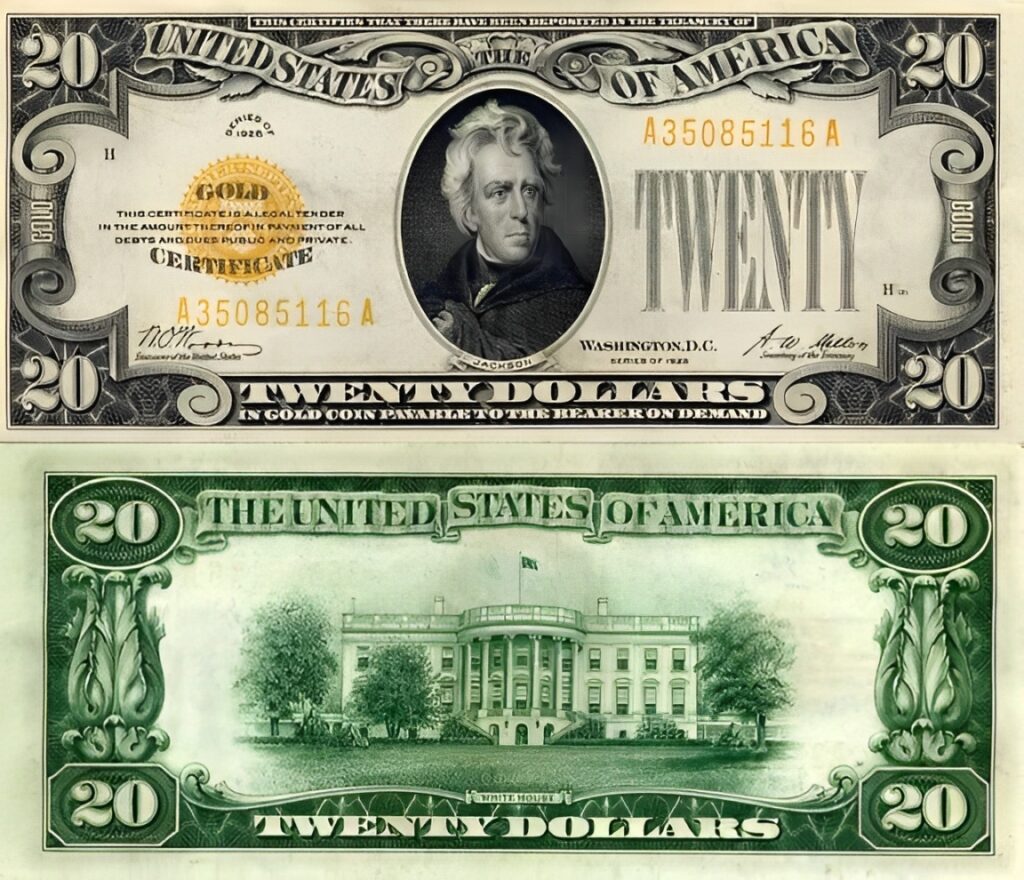
This small-sized gold certificate has a clean layout with a bright yellow-gold seal and serial numbers. It was issued during the gold standard but was later pulled from circulation after the 1933 gold recall. Circulated versions usually sell for $100 to $300, while higher grades go for over $1,000. These notes are legal to own but no longer redeemable in gold.
Collectors value this piece for its distinct look and historical background. It represents the end of an important monetary system in U.S. history. The 1928 issue was the only small-size $20 gold certificate ever printed. Its bright color and sharp design make it a standout note.
1934 $500 Federal Reserve Note
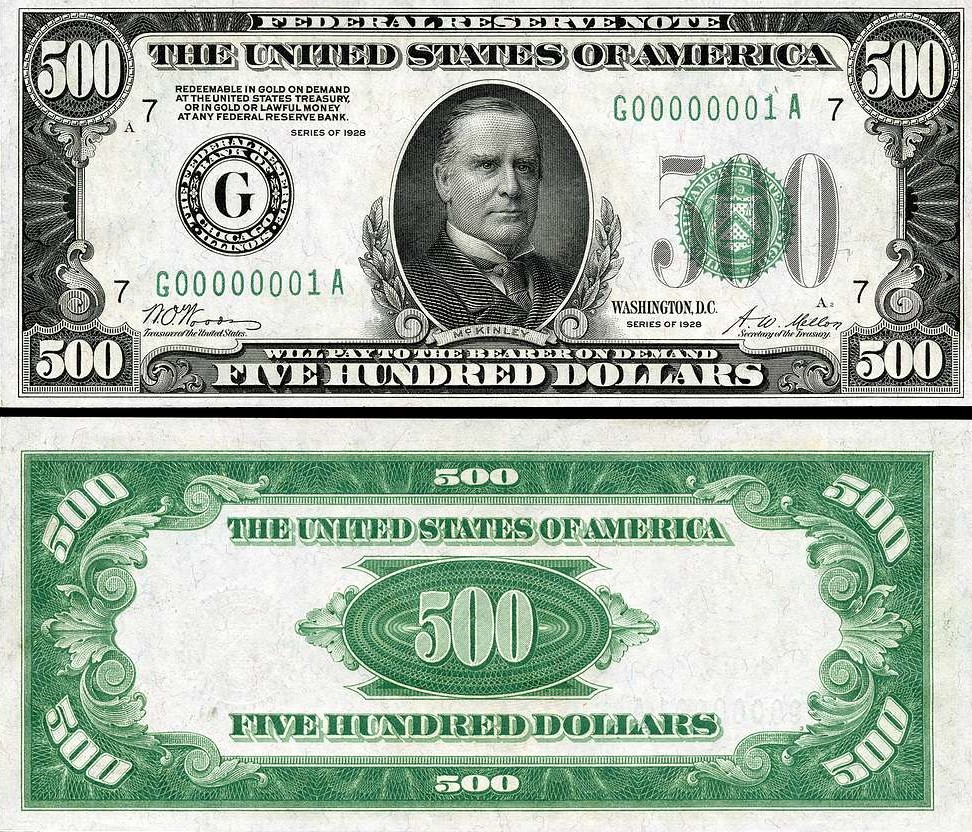
High-denomination notes like this were not meant for public use but for transactions between banks. The 1934 $500 note features President William McKinley and has a green seal. Circulated examples often sell for $1,200 to $2,000, while uncirculated ones can reach $4,000 or more. Most of these were retired and destroyed, making them rarer today.
Collectors love these for the large face value and the fact that they are no longer printed. The design is simple but powerful. These notes are legal to own, and many survive in strong condition due to limited circulation. They hold both historical and collector interest.
1934 $1,000 Federal Reserve Note
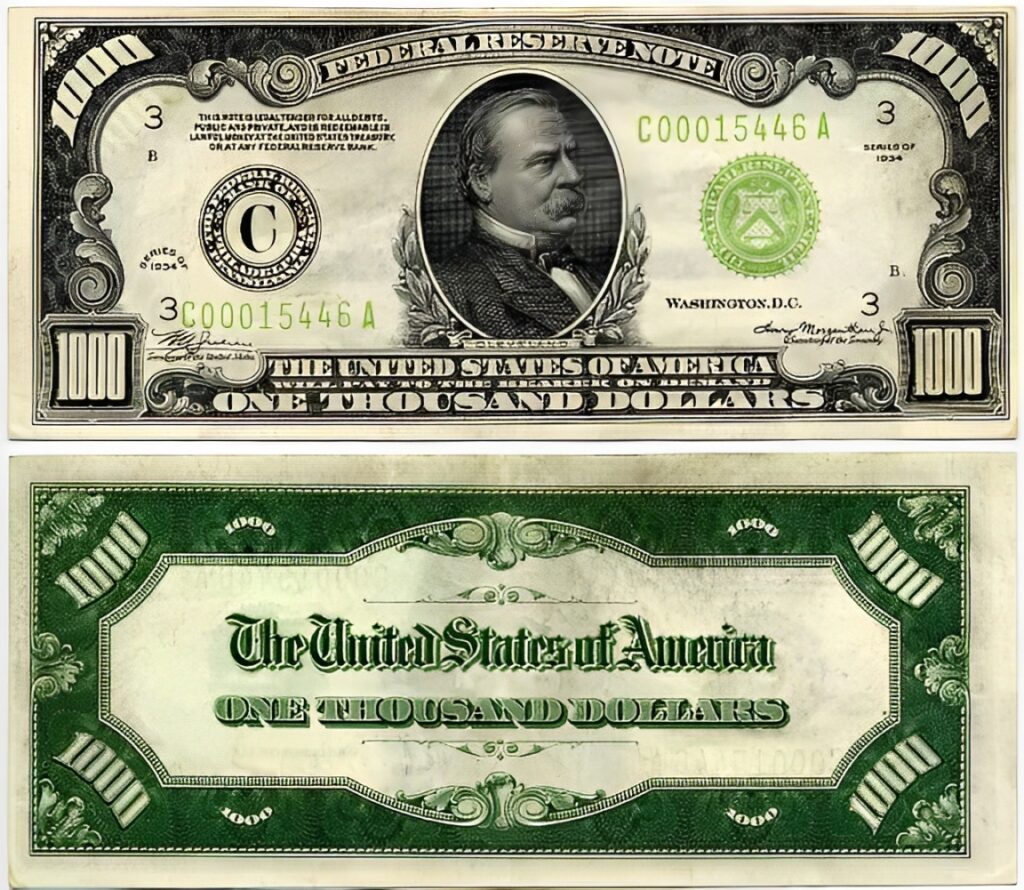
Like the $500 note, the $1,000 bill was used mostly for bank transfers and featured President Grover Cleveland. It has a green seal and large format that makes it hard to miss. Today, values typically range from $2,000 to $5,000, depending on grade. Uncirculated notes can go even higher.
These are among the highest denominations ever printed in the U.S. They were retired in the 1960s but remain legal to own. Because fewer were saved by the public, they are now quite scarce. Serious collectors are drawn to the note’s rarity and face value.
1923 $1 Silver Certificate (Horse Blanket Note)
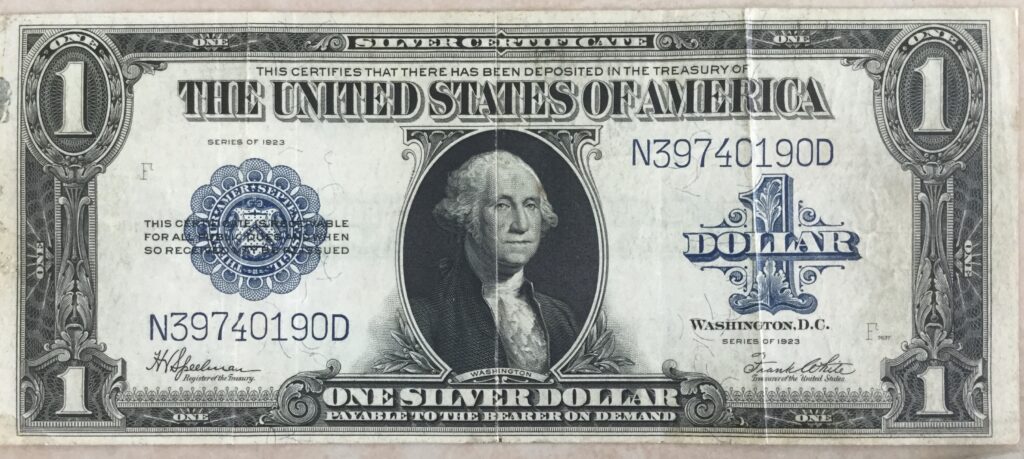
Nicknamed the Horse Blanket due to its large size, this silver certificate was the last large-size $1 bill printed. It features a blue seal and a portrait of George Washington. Most examples sell for $50 to $300, depending on condition. Uncirculated notes can reach over $1,000.
Collectors enjoy this note for its nickname and oversized appearance. It marked the end of an era before the switch to smaller bills in 1928. These were heavily circulated, so better-quality pieces are harder to find. It remains a fun and affordable note for many collectors.
1914 $5 Federal Reserve Note (Blue Seal)
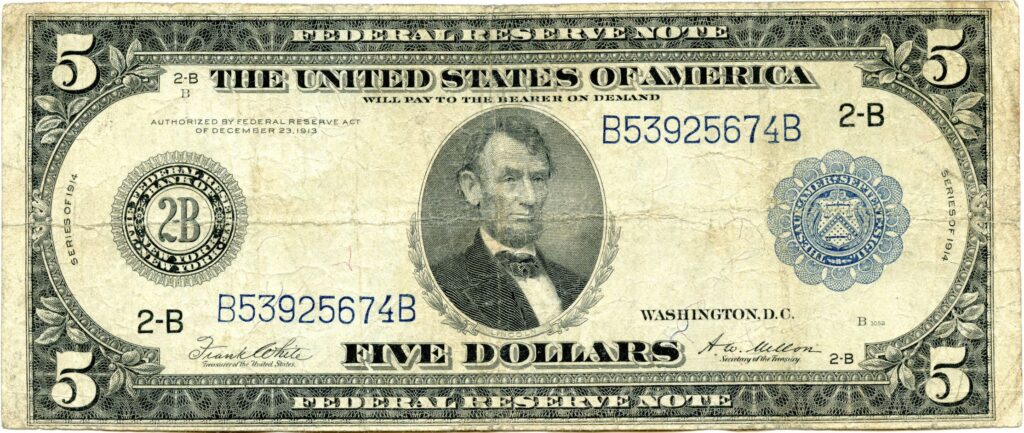
This early Federal Reserve Note features Abraham Lincoln and a blue seal. It was part of a new system created by the Federal Reserve Act and used in regular circulation. These notes often sell for $100 to $300 in average condition. Uncirculated versions can reach $700 or more.
Collectors value this note for both its design and its place in economic history. It shows the beginning of a new structure for American banking. The bold blue seal and ornate borders give it a strong look. Many were well-used, so condition matters when buying.
1934A $10 North Africa Yellow Seal Note
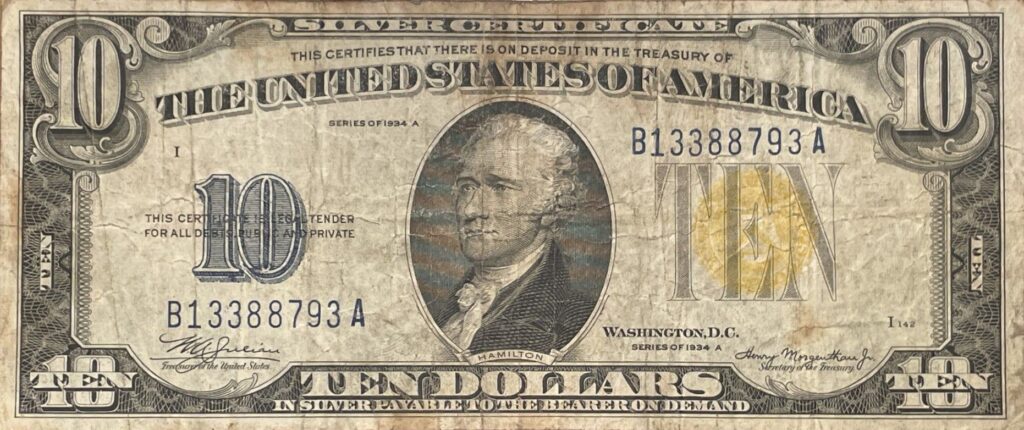
This note was made for U.S. troops during World War II and has a yellow seal instead of the usual green. It could be canceled quickly if lost in enemy territory. These notes can sell for $200 to $600, with high-grade versions going over $1,000. It is a special issue that saw real military use.
Collectors enjoy its wartime background and unusual design. The yellow seal makes it stand out in any group of notes. Because many were handled roughly, well-preserved pieces are worth more. It is both a piece of currency and a piece of history.
1862 $1 Legal Tender Note (First U.S. Paper Currency)
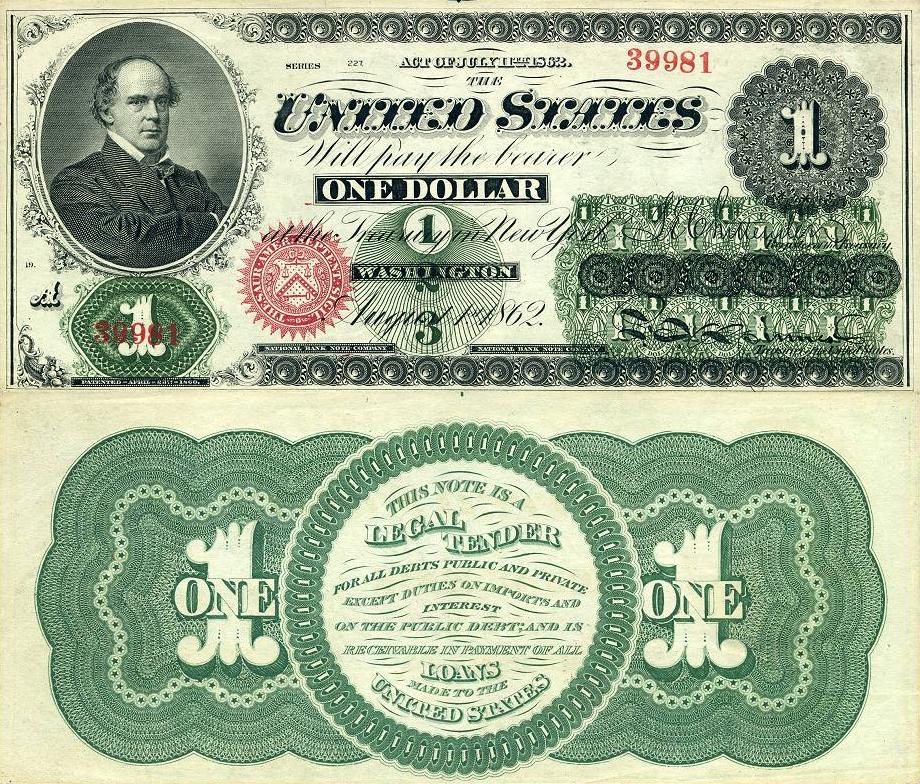
This is one of the first paper bills printed by the U.S. during the Civil War, often called a Greenback. It features a red seal and a simple design with ornate text. These notes were widely used, so condition plays a big role in value. Expect to pay $300 to $800, with rare higher-grade notes going beyond that.
Collectors value it for its place at the start of American paper money. It represents a major shift away from gold and silver coins. The fragile paper and age make nice examples scarce. Holding one feels like holding a piece of early financial history.
1935 $1 Silver Certificate with Hawaii Overprint

Issued during World War II, this note has a brown seal and a large HAWAII overprint on both sides. It was used in Hawaii as emergency currency in case of invasion. These notes sell for $40 to $150, with uncirculated pieces going higher. The overprint makes it stand out instantly.
Collectors value the note for its military history and unique look. Many were saved as souvenirs, but clean examples are harder to get. It was part of a key strategy during wartime. It adds both style and story to any collection.
1890 $1 Treasury Note (Coin Note)

This note was issued to pay for silver bullion and features a distinctive layout and seal. It is known as a coin note and was backed by Treasury coin reserves. These often sell from $300 to over $1,500, depending on condition. The intricate design adds to collector interest.
These notes are rarer than many other bills from the era. They were not printed for lon,g and many were redeemed and destroyed. Surviving examples are considered strong collector pieces. They are rich in both design and history.
Every rare note has a reason it stands out, whether through design, rarity, or background. Finding these bills and learning their history can turn a small interest into a lasting hobby. Even a single unique note can spark curiosity and lead to more discoveries.
This article originally appeared on Avocadu.
